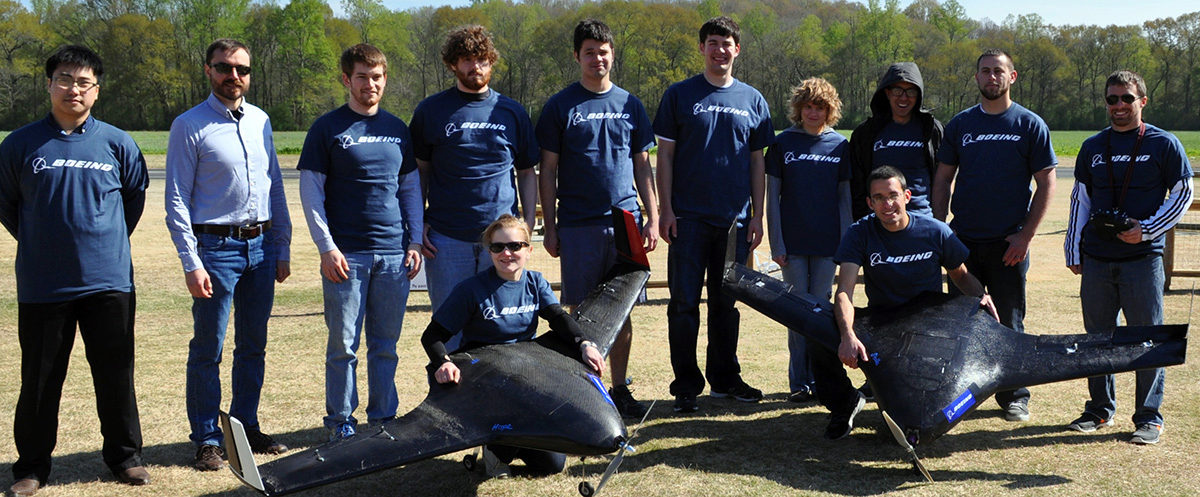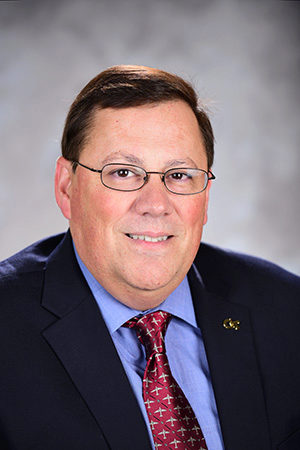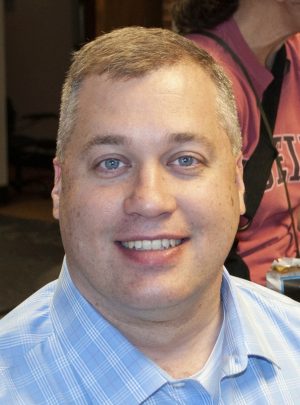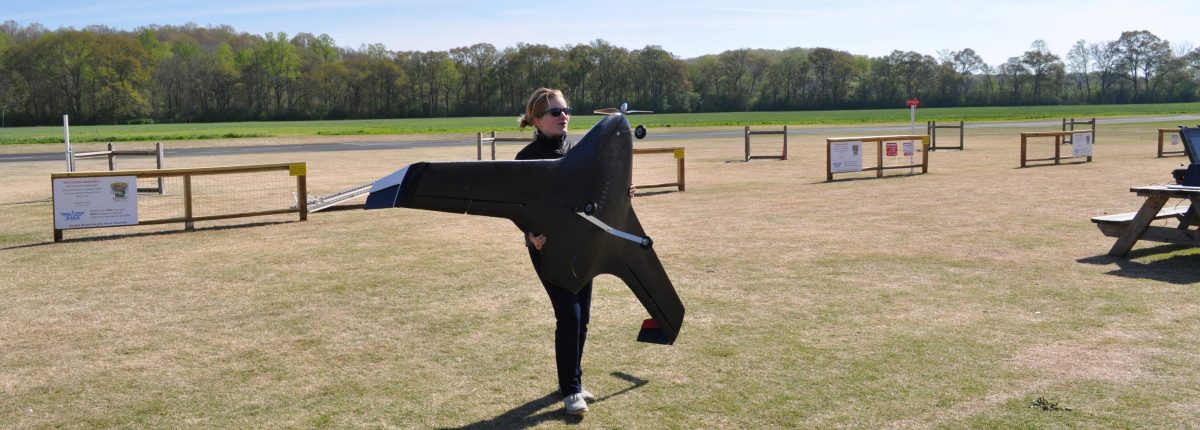 Good Track Record. Above is Georgia Tech's 2014 AerosPACE team. This year's team just got its marching orders to build a hand-launched plane for the April 2019 fly-off. They also just met their fellow engineers - students from six other universities.
Good Track Record. Above is Georgia Tech's 2014 AerosPACE team. This year's team just got its marching orders to build a hand-launched plane for the April 2019 fly-off. They also just met their fellow engineers - students from six other universities.
 |
| Dimitri Mavris |
Students from the Daniel Guggenheim School of Aerospace Engineering hosted students from six other universities on August 30, as they kicked off the beginning of the year-long Boeing AerosPACE Challenge.
The Aerospace Partners for the Advancement of Collaborative Engineering (AerosPACE) is a year-long capstone design event, sponsored by Boeing.
Each year, the AerosPACE program tasks students from the nation's top engineering schools to design and build an unmanned aerial system (UAS), using specs that are given to them at the beginning of the academic year by Boeing engineers. From now until April, team members from different schools will collaborate with each other by creating their own virtual workspace. Boeing will provide each team with a $6,000 budget and a computer platform on which to receive training, but the inspiration will have to come from the students. A fly-off will be hosted at one the participating schools in the spring.
This year, each of the teams will create a conceptual, preliminary, and detailed designs for a hand-launched, fixed wing aircraft that will meet payload, speed, and duration requirements. They will also build prototypes of subsystems and a scaled down prototype of their UAS for the fly-off.
In addition to Tech, students from Purdue University, Tuskegee Institute, Clemson University, Iowa State, Brigham Young University, and the University of Washington will participate in the 2018-19 AerosPACE challenge. Each of the seven teams competing is required to have students from three different schools. Each school represented on a team must manufacture its own part of the UAS.
"The fact that they are all working on this project from their own schools makes this a very realistic engineering challenge," said Regents Professor Dimitri Mavris, whose Aerospace Systems Design Lab (ASDL) has participated in at least six previous AerosPACE Challenges.
"Today's engineers need to be able to collaborate across different time zones, geographies, and cultures. They are learning the sort of collaboration skills that you can't imagine getting in a typical capstone project."
Mavris's sentiments were echoed by the students who gathered at Tech to meet once before scattering to different corners of the country to begin their work. Over a box lunch, they shared some of their excitement:
"I think it will be interesting to work remotely," said Purdue University aerospace student Scott Eckart.
 |
| Mark Cousino |
"I'm very interested in controls and this will give me some good experience," said Dylan Hoff, a senior at the University of Washington.
Under the rules set forth by Boeing, the vehicles will be tested on airfields operating under Academy of Model Aeronautics regulations and shall comply with their regulations. All flight demonstrations will also be required to include an analysis of flight performance data.
"This a great investment for Boeing on a few levels," said Mark Cousino, Boeing's director of learning, strategy, design, and technology. "First of all, we recruit from all of these schools, so this gives us a better sense of what is out there for future talent. As a company, this entire competition is a great research test bed. We can test out different techniques and methodologies for learning during this competition that we can turn around and use at Boeing. Every training class the students take with us, we'll be able to see every click they make... eventually, that will allow us to detect patterns from which we can develop algorithms that will point us to a better way to teach this material to our own employees."
